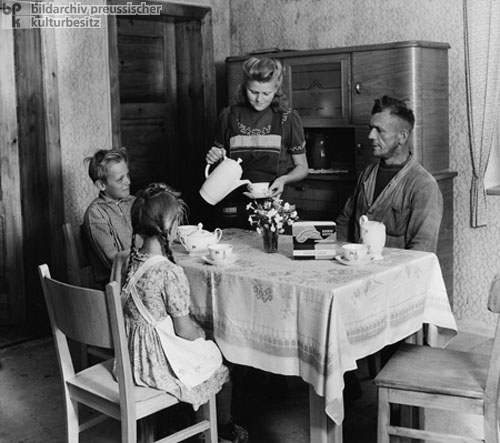|
Farmer’s Family from Bruchstedt (Sondershausen District) (July 1950)
In the postwar period, the primary goal of GDR economic policy was to bring the supply of foodstuffs and consumer goods back up to pre-war levels. This remained the goal until well into the 1950s. Nevertheless, the rationing of numerous everyday necessities (for example, meat, butter, and shoes) was only discontinued in 1958. This being the case, the population of the GDR, when compared with that of the Federal Republic, experienced a very extended postwar period. The ideologically-driven planned economy, and in-kind restitution to the Soviet Union as opposed to Marshall Plan aid prevented an “Economic Miracle” along Western lines and caused supplies to remain critically low, even in the next decades. This photograph from July 1950 shows four members of a farmer’s family drinking coffee in their simply furnished house. Coffee, which was associated with a high quality of life, was in short supply throughout all of Germany after the war. Therefore, residents of the Soviet occupation zone had to make an ersatz-coffee from malt, corn, or chicory in the immediate postwar period. After the start of the 1950s, the GDR imported coffee from the Soviet Union. But the shipments were stopped in 1954 on account of the GDR’s shortage of foreign currency. Nonetheless, after a short time, the GDR started importing coffee beans again. The beans were roasted domestically. Despite this, coffee beans were still too expensive for most GDR citizens, and real coffee remained a luxury item.

|


